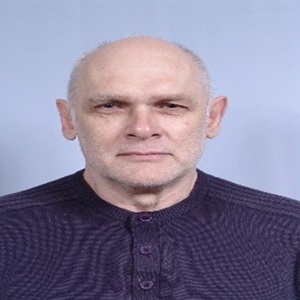Abstract Detail

Valery P. Kalinitchenko
Institute of Fertility of Soils of South Russia, Russia
Abstract
Current “Ecosphere – technology” conflict stems from an environmental, agricultural and chemical management outdated technological platform based on a simplified attempt to imitate natural phenomena in technology root case. A standard chemical-technological system hierarchy determines the own technological waste and ecosphere chemical-technological load. Badly controlled soil geophysical system reduces a soil productivity.
A critical reassessing of the land and water use, waste recycling technologies, environment and agronomy practice is needed to eliminate shortcomings and configure a future sustainable environmentally sound chemical-soil-biological engineering.
Using a heuristic approach to understand an origin of an environmentally sound technological development niche, we configured the chemical-soil-biological engineering (CSBE) methodology and Biogeosystem Technique (BGT*) methodology.
The BGT*-CSBE objects are: main product chemical-technological system; devices for improving the geophysical and geochemical properties of soil by synthesizing the structure and architecture of its illuvial layer for the biological-soil recycling of bulk or granular by-product; pulsed intra-soil sequential-discrete devices for recycling of liquid by-product and/or soil moistening and plant nutrition; and an environmentally friendly biological production.
BGT*-CSBE is capable in providing: a main chemical product fully waste-free technology; a dispersed by-products recycling within the synthesized fine-aggregate architecture of the soil inner layer for a plants favorable development; and a food, fodder and row material economic use of the biological production obtained on the synthesized soil.
BGT* applies nature phenomena creating a nature-friendly technical means and technologies for a long-term soil geophysical, chemical, water and biological properties optimization. The BGT* based one time 20–50 cm layer intra-soil milling provides a stable soil fine multilevel aggregate system improving a soil biome function for up to 40 years. The BGT* based intra-soil pulse continuous-discrete watering reduces a plant water consumption circa 5–20 times compared to the standard irrigation. BGT* based municipal, industrial waste and gasification byproduct intra-soil dispersed recycling in a course of the 20–50 cm soil layer milling provides soil solution equilibria control, heavy metals passivation, environmental safety and plant nutrition. Using BGT* methodology, the yield becomes higher circa 50–80% compared to standard technology. BGT* methodology promotes the soil system continuity, reinforces soil biogeochemical turnover, ensures a reversible carbon intra-soil and aboveground biological sequestration, provides biosphere health and climate system sustainability.
There is a strong need to use a BGT*-CSBE and in their chemical-biological engineering theory and practice. The BGT*-CSBE helps to understand a new world chemical engineering development niche. Ths BGT*-CSBE expands the environment, soil science, agronomy, irrigation, waste recycling fields corresponding new technical equipment design and manufacturing. The BGT*-CSBE provides a practical solution to a friendly environment synthesis and make a designer’s job more efficient focusing on the new high level developments and improving the accuracy of a design. The CSBE and BGT* provide new information to assist in a design problem.
BGT*-CSBE is a circular green chemistry waste free environment friendly and biosphere high quality and productivity development platform.
Biography
Professor Dr Sc (Biol) Valery P. Kalinitchenko. Candidate of Science Degree from Moscow State University, Soil Science Faculty, in 1984. Doctoral of Science Degree from Moscow State University, Soil Science Faculty, in 1991. Don State Agrarian University, Agriculture and Land Reclamation Department Chair, Persianovka, Russia, in 1976-2012. The director of the Institute of Fertility of Soils of South Russia Persianovka, from 2003 till now, and the leading researcher in the All-Russian Phytopathology Research Institute, Big Vyazemy, Russia, from 2016 till now.
